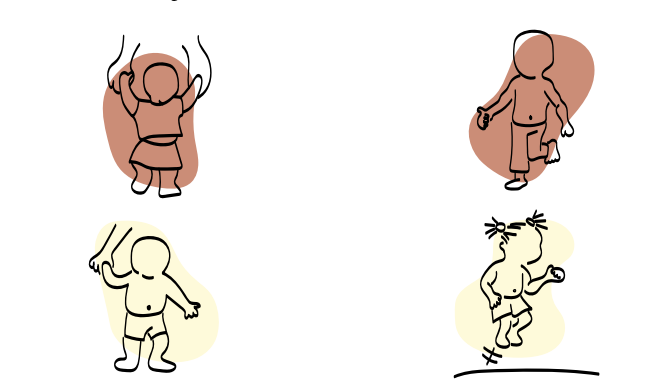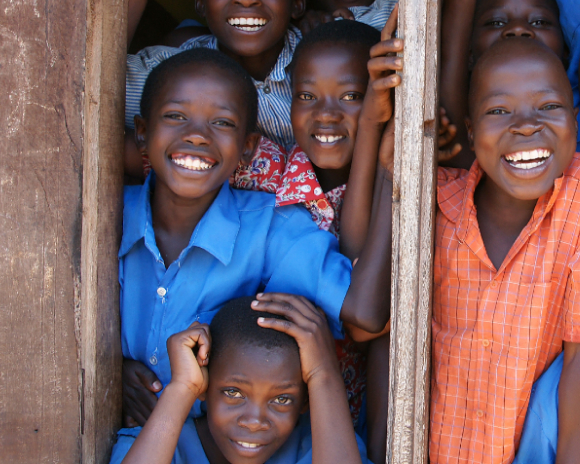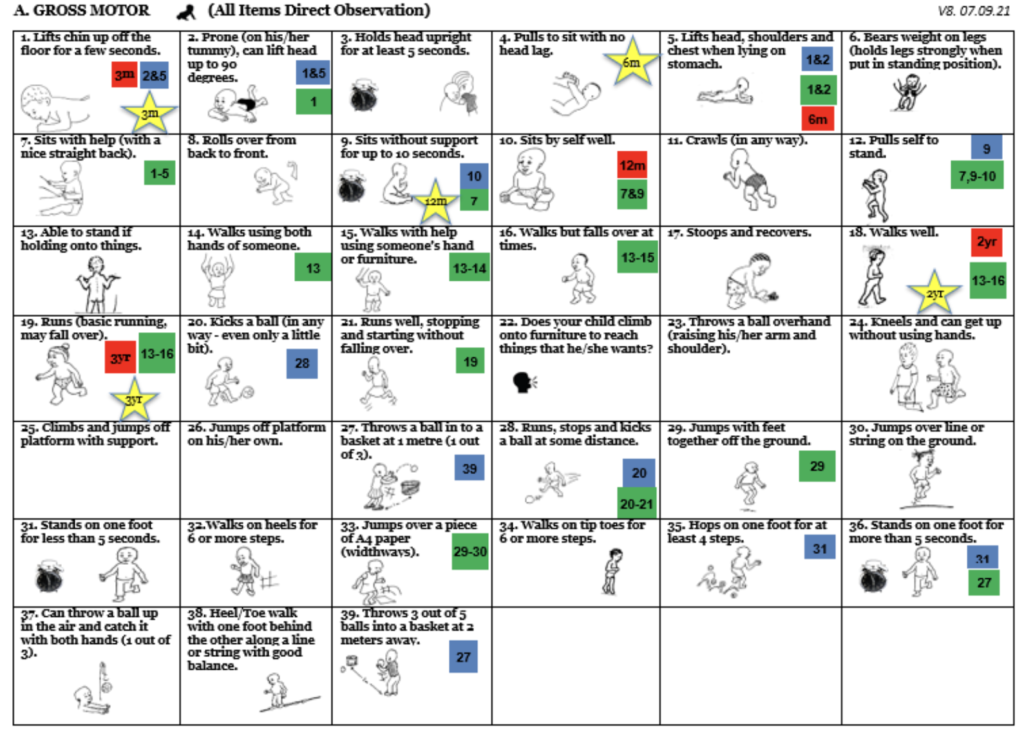
A simple-to-use, adaptable tool used to assess brain development in young children living in low-income settings.


The MDAT is a directlyassessed (with some parent report items) developmental tool that was first created in 2004 and revised with a detailed validation completed in 2008 in Malawi. It measures development in four areas (gross motor, fine motor, language and social adaptive development) with cognitive development being measured across the domains but particularly across the fine motor and language domains of the tool.
It is best used for providing information about children’s development for programmatic purposes e.g., for evaluating whether an intervention or risk factor is affecting children’s development in large numbers of children.

The MDAT is available in paper form (you can download it) or for use on a computer or tablet. The cost of using MDAT varies depending on the scale and scope of your project. If you would like to use the tool or find out more, simply request access by registering as a member.
Some training materials that we use for training and which we can provide upon the completion of training include:
Anyone! The MDAT was specifically designed so that people of all backgrounds could learn to use it. We have trained nurses, doctors, community health workers, & high school graduates to use the MDAT. You must be trained (usually 1 week) to use the MDAT, and longer if you want to train others

Visit our FAQ page to find out the full list of
frequently asked questions.
Children in low resource settings are more likely to have difficulties with their development than children in resource wealthy settings. There are more risk factors in a low resource setting that affect children’s development – including caregiver education, pregnancy and post-natal infections in a child, food insecurity, poverty and stressors within the household. Interventions that can affect children’s development in resource-limited settings can make big differences for outcomes of all children into school age and adulthood. Being able to measure child development in resource limited and varying cultural settings can support programmes as to what the best choices are for interventions that they provide.
No. The MDAT enables teams in low- and middle-income settings around the world to measure the impact of interventions which may affect early child development in the first few years of life. MDAT has been used in over 20 countries such as India, Pakistan, South Africa, Zimbabwe, Uganda, Nigeria, Kenya, Tanzania, Lisbon, France, RD Congo and more! Additionally, it has been endorsed by Governments, Researchers and NGOs such as the Gates Foundation, Save the Children, Medicine Sans Frontieres and World Bank.
Learn more about MDAT’s Impact and global reach.
The MDAT is one of the only tools for children from age 0-5 which includes direct observation and has been well validated in Sub-Saharan contexts. It has items that are understandable and easy to use in a variety of different contexts. It has been used in over 25 countries in Sub-Saharan Africa, Asia and Central and Latin America. It is cheap to create a kit and the kit can be created out of local materials, many of which can be found in local markets and households. The MDAT can be scored using a Z-score approach so it can provide a level of development (DAZ) which can give information about the population that is being assessed.
The Global Strategy for Women’s, Children’s and Adolescent’s Health (2016-2030) outlines a number of strategies that need to be put in place in order to help these young children not just survive, but thrive.
One of which is ‘ensuring that all children have access to good quality early-childhood development’. And that’s where the MDAT comes in.
The MDAT enables teams in low and middle income settings around the world to measure the impact of interventions which may affect early child development in the first few years of life.
The MDAT has been used in over 20 countries on more than 8000 children and endorsed by Governments, Researchers, and NGOs such as the Gates Foundation, Save the Children, Medicins Sans Frontieres and World Bank.
MDAT was developed by a team of researchers at the University of Liverpool and the College of Medicine in Malawi.
It was created after a series of detailed studies in Lungwena (the Mangochi region of Malawi) as well as in a number of different areas of Southern Malawi (Nguludi, Namitambo, Bangwe and Mikolongwe).
The MDAT has undergone rigorous research and testing. The first version was created in 2008 and the second in 2010.

Register your interest in training using the form below
Read more about MDAT and related articles
© Copyright Design Wellness 2023